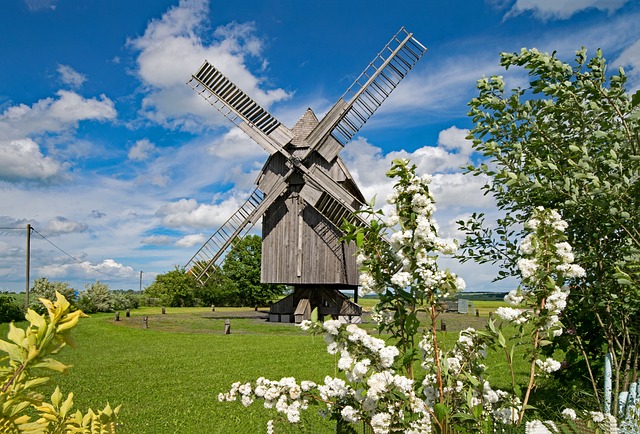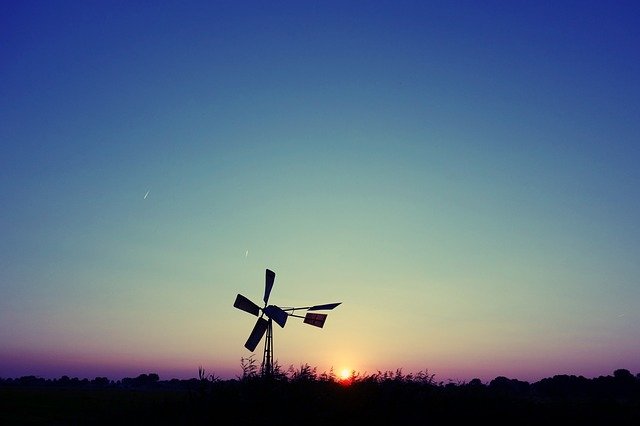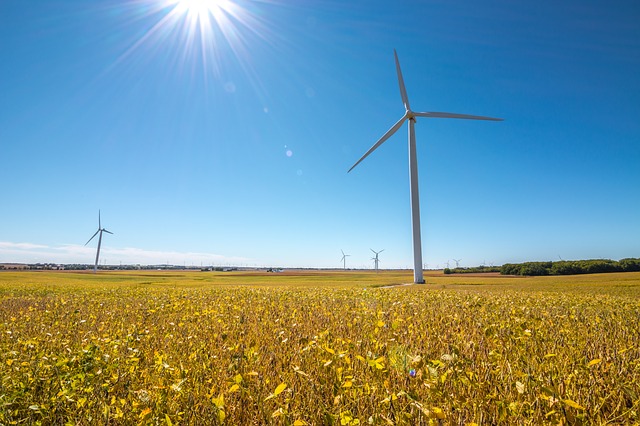Big comeback of wind energy
In the last few years, wind power has emerged as virtually a new science and technology creating new companies and new jobs, as a vital adjunct to solar power, and a tool to break the grip of the oil cartels and reclaim our beautiful land from the pollution that engulfs it. Although, historically, for America after World War II, wind energy was all but forgotten until the seventies, when America realized that the supply of the world’s oil was not infinite.
The years before didn’t give the US much warning that our illusion would be ending anytime soon. A gallon of gas hovered in the twenty-five cent range; commercials on the TV were full of smiling gas attendants singing and dancing about their wonderful gasoline; a dollars’ worth of gas would last you from the middle of the week to payday on Friday. Some of the stations even gave you gifts for shopping there.
The end of that era came so quickly that everyone was taken by surprise. Suddenly there were long lines at the gas station; the number on your license plate designated you as an “odd” or an “even” and that dictated on which day of the week you could buy gas; and Las Vegas dimmed the casino lights in a patriotic gesture to save oil. Still, the price for a barrel of crude oil rose, and continues to this day.
History on wind energy, along with the old wind-spinners, had been dismantled and discarded long ago. They laid to rust in the grandparent’s back yard, orchard, or pasture. There weren’t a lot of kids asking about them, or about the history of wind energy.
Had they asked, their grandparents could have told them that those were windmills, or wind-spinners, as they had been affectionately nicknamed. When the REA (Rural Electrification Administration) came through and brought electricity to the Great Plains and the Tennessee Valley, the farmers were forced to tear down the wind-spinners; you couldn’t have both electricity and the mills.) By 1939, there were 417 co-ops serving over a quarter of a million households, and wind energy was history.
Europe didn’t quite forget as readily as the Americans. Their gas and oil prices were never so artificially low. The Netherlands and Denmark continued in their conservation and wind-spinning, as they had for hundreds of years.
California, one of the hardest hit states from the oil embargo, has taken serious steps at wind farming. In the desert and pass communities, there are giant wind farms. In a growing number of communities, those with grid tie-in solar and/or wind cannot only lower their power bill, but sell back some of their generated power to the utilities.
How will future of wind energy look like?
California can still learn a lot from the Europeans. The Netherlands, second only in densest population to Bangladesh, has vowed to generate 6000 megawatts by 2020.
At some point, the pioneers of this new technology had to ask themselves,” What is wind power, and how does wind power work?” Wind energy converts kinetic energy that is present in the wind into more useful forms of energy, such as electricity. As water, steam, and any number of fuels have powered turbines, or their earlier versions, so does wind.
Wind power graphs measure the relationship between the speed of the wind and the power output (watts) of a turbine. Soon, this measurement may come to mean as much as miles per gallon mean now.
Residential wind power, with the technology of wind power generators, in the combination of solar wind power, bring these applications into use today.
Disadvantages of wind energy matter…
There are those, of course, who see disadvantages in wind power. The strength of the wind is not constant, meaning that turbines don’t produce the same amount of electricity all the time. The countryside should remain untouched. Turbines are noisy; each one can generate as much noise as a car. Some find the structures unsightly. Pollution is produced when manufacturing turbines. The largest turbine can only serve four hundred and seventy five households when running at full capacity; extrapolate that into a town of one hundred thousand and there’s not enough electricity for everyone.
…but advantages are important as well
Wind is free. Once built a wind turbine doesn’t cause any greenhouse gasses or other pollutants. Even though wind turbines are very tall, they only require a small plot of land to stand on. Aesthetically pleasing to some.
Useful in remote areas not connected to the power grid. Wind turbines have a role to play in both the developed and Third World. Turbines are available in a range of sizes, so a vast range of people and businesses can use them.
As the producers of gaslight said, at the dawn of electrical power: Unproven dangerous technology!
Sources:
- Market Insider: Price of oil
- Wind Energy Foundation: History of wind energy
- Roosevelt Institute: Rural Electrification Administration


